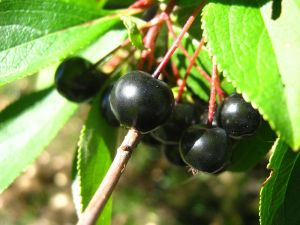 It seems that each morning, despite the lingering cold, more birds are singing their courtship songs. Why they do so when it’s still months away from nesting for some of them, I don’t know. Thankfully, their song and the brightening days give a different feeling to the outdoors as we approach spring. Bird songs help set the mood for the day if you take a minute to listen. Perhaps they mean more to us than we realize- some researchers believe bird songs gave rise to our love of music which seems so important in our lives even though it’s hard to define why. Personally, music is very important to our family, and some of our best times are spent playing. If we’re lucky, we get to play with other musicians who are more accomplished than we are. Last week we played along informally with such a group, and our family chose the song “Big Yellow Taxi” by Joni Mitchell. Afterward I told the group that I just couldn’t help doing what we call our “treehugger” song, and our friend Gerry Sloan, a fine big Irishman replied, :“That’s ok, trees need love, too.” They certainly do.
It seems that each morning, despite the lingering cold, more birds are singing their courtship songs. Why they do so when it’s still months away from nesting for some of them, I don’t know. Thankfully, their song and the brightening days give a different feeling to the outdoors as we approach spring. Bird songs help set the mood for the day if you take a minute to listen. Perhaps they mean more to us than we realize- some researchers believe bird songs gave rise to our love of music which seems so important in our lives even though it’s hard to define why. Personally, music is very important to our family, and some of our best times are spent playing. If we’re lucky, we get to play with other musicians who are more accomplished than we are. Last week we played along informally with such a group, and our family chose the song “Big Yellow Taxi” by Joni Mitchell. Afterward I told the group that I just couldn’t help doing what we call our “treehugger” song, and our friend Gerry Sloan, a fine big Irishman replied, :“That’s ok, trees need love, too.” They certainly do.
This time of year, many of us plan for spring landscaping projects. We daydream as we page through paper or internet catalogues, thinking about our yards and what we could plant to add to our happiness in our personal ecosystems. It’s the same with wildlife managers- everything revolves around the plants that form the base of all our habitats. In our case at Woodland Dunes, we choose plants that are native (or at the least aren’t invasive) to the area and benefit wildlife. We have a lot of documentation from our preserve and Point Beach to draw from, and there is a lot of information available as to what plants are the most beneficial for birds, butterflies and moths, bees, and other animals.
In a lot of cases we have to make room for them. Invasive, non-native plants like buckthorn, honeysuckle, and barberry that are planted around residences escape to the forest and crowd out the native plants. The first step to restoration is to identify and remove them, because even though they provide cover and berries, they are of lower quality than native plants and wildlife suffers.
Second, appropriate plants are chosen and planted. Serviceberries, chokecherries, hawthorns- there are many native trees and shrubs that help wildlife. Milkweeds and other native wildflowers help butterflies and other pollinators. You can contact the nature center for lists of beneficial native plants.
Then third and perhaps most important (and where the love comes in), it is important to keep caring for what you plant. Think about it- native wildlife, like deer and rabbits, prefer native plants. If the neighborhood is filled with invasive non-natives, a patch of native saplings might be a treat for local herbivores, and they often devour new leaves as fast as they are produced until they are above browsing height. It’s a tough world out there, and little trees need armor of some sort- tree tubes or cages made of fencing are important. And after they are installed, they need to be checked to make sure they’ve not been knocked over or need to be modified to keep protecting the plants as they grow. In grassy areas, meadow voles can chew the bark if holes in the fencing material are big enough to let them in. This protection needs to be maintained until the trees or shrubs are tall enough- if you visit our nature center you’ll quickly see how high deer browse by condition of trees in our front yard. Right now, the browsers can be particularly hungry at the end of a long winter, so it’s good to check on your tree defenses.
During the growing season, it’s also important to make sure that plantings have enough water until they are well established, which can take a few years. We planted about 3,000 trees and shrubs last year, but very timely summer rains made it unnecessary to have to water often, to the relief of our summer interns! We hope the same for this year.
Giving a little love to your wildlife plantings for a few years will help them grow and benefit your personal ecosystem for a long time. And we all need a little love, don’t we?
